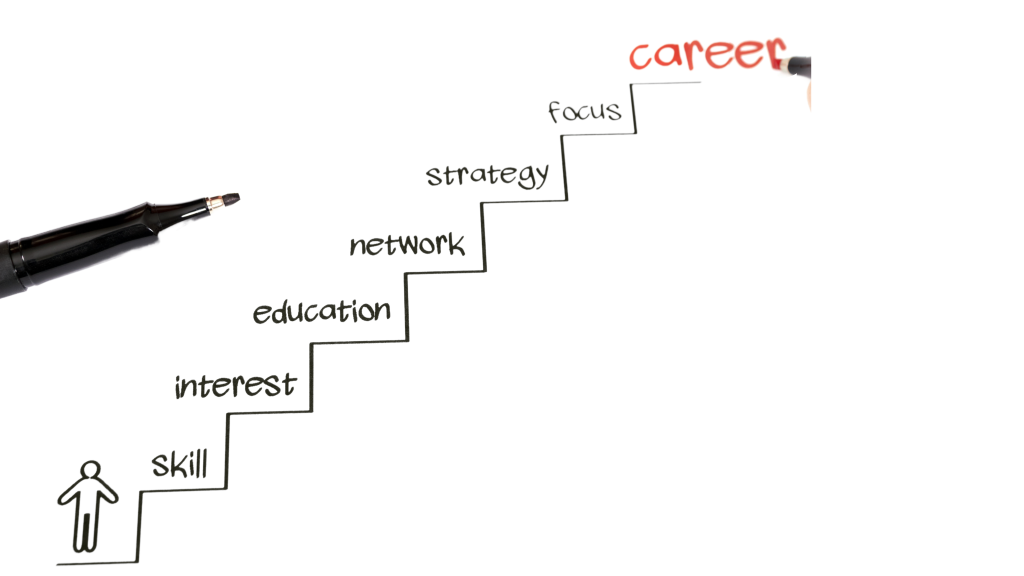Much like the provision of upskilling programs and tuition reimbursement, career pathing is a significant differentiator for companies looking to attract and retain top talent in one of the most competitive job markets in the last decade. In fact, lack of career development or advancement opportunities within a company has surpassed salary as the leading reason frontline, and entry-level employees quit their jobs.
Competency-based career pathing is the most popular employee development strategy for large and mid-size employers looking to enrich their workforce. With careful planning and thoughtful execution, competency-based career pathing can also be a powerful tool for improving employee retention and driving business growth by providing career growth opportunities to its existing workforce.
What is competency-based career pathing?
In the workplace, competencies are the collective skills, knowledge, and behaviors necessary to succeed in a specific role. Competency-based career pathing combines an employee’s objectives with strategic upskilling or educational milestones. The process aims to help align the employee with the career path HR or a talent coach identified. This will also empower the employee with tangible results illustrating professional growth and motivation to succeed.
For an employer, a systematic approach of providing and measuring employee competencies can provide real-time snapshots of the workforce’s overall knowledge capital and skills portfolio. This information can be used to assess retention rates among participating employees and quantify returns on investment in upskilling and competency-based programs. It can also help improve operations within a human resources department and serve as a case study to promote employee participation in a company’s development programs.
How does competency-based career pathing work?
Within an organization, career pathing is typically led by an HR associate, talent development supervisor, or a career coach who works with employees to map their potential trajectory – and like many business segments, the process is increasingly digital. Thankfully, the newest innovations in HR Tech have made it easier than ever before to provide employees with the knowledge and training needed to keep them aligned with their career paths.
The first step is identifying what the company needs from its employees. This could be a knowledge gap among frontline or entry-level workers, a perceived lack of experienced mid-level management, a dwindling pipeline of future leaders, or the need to train employees to use emergent technology. At this phase, it’s typically best to interview company executives, management staff, and employees to identify a hierarchy of needs at both ends of the corporate ladder.
Next, a company will need to assess how the skills of its workforce and experience match their career objectives. This will illustrate to the employee and their employer what sort of competency-based development track will be most impactful and establish a clear launch point.

Knowledge gleaned from this process will help a company launch a career pathing program that is mutually beneficial. Given employee preferences, companies should select a computer or web-based competency library that offers the flexibility to customize a development track that matches the larger objective. There is no single solution to competency-based career pathing that will fit every company or every workforce. Personalization is key to producing results that truly benefit each unique workforce’s goals and demographics and closes knowledge gaps.
Effective talent management, development programs, and career planning directly contribute to the healthy financial performance of an organization. With this in mind, the decision to introduce competency-based career pathing and development programs in an organization should not be made without considerable due diligence.
The biggest variable to consider is the amount of bandwidth a company has to allocate the time and resources necessary to make the programs successful. Organizations will need to devote significant time to planning, communicating, and managing the program for prospective and participating employees.
Career pathing strengthens retention and diversity.
According to the American Community Survey, an ongoing government survey of our nation’s communities, frontline workers constitute 52% of the nation’s workforce. When looking at race, a higher share of frontline workers identifies as part of a minority group. This includes women, who represent 43% of all frontline workers. By definition, frontline workers in corporate organizations most often include receptionists, customer service representatives, front desk staff, warehouse employees, cashiers, or any other type of employee whose job function requires significant face-to-face interactions with other people.
Career pathing programs should be offered beyond management and executive staff. The provision of development programs for frontline workers and entry-level staff will prepare these employees for internal promotions, which can help curb recruitment costs and eventually bridge common gender and diversity gaps from the bottom up. A more equitable provision of career pathing programs will likely positively impact a company’s effort to diversify its senior and executive leadership team in the long term.

Case Study: Pathstream helps Amazon deploy a successful professional development program
In 2021, Amazon partnered with Pathstream to deploy a data analytics training program for warehouse workers, specifically a competency-based career development for its frontline employees. The goal was to equip this demographic with the skills needed for open data analyst positions.
Women and minorities accounted for more than 70 percent of program participants.
Over time, the program increased retention rates and improved digital skill proficiencies by 111% among enrolled employees. Participating employees also expressed new confidence in applying the concepts they learned to pursue advancement opportunities within the company. This included various analytics-related roles, including process analyst, business analyst, data analyst, human resource analytics, and operations manager.

Was this helpful?
Thanks! What made it helpful?
How could we improve this post?






